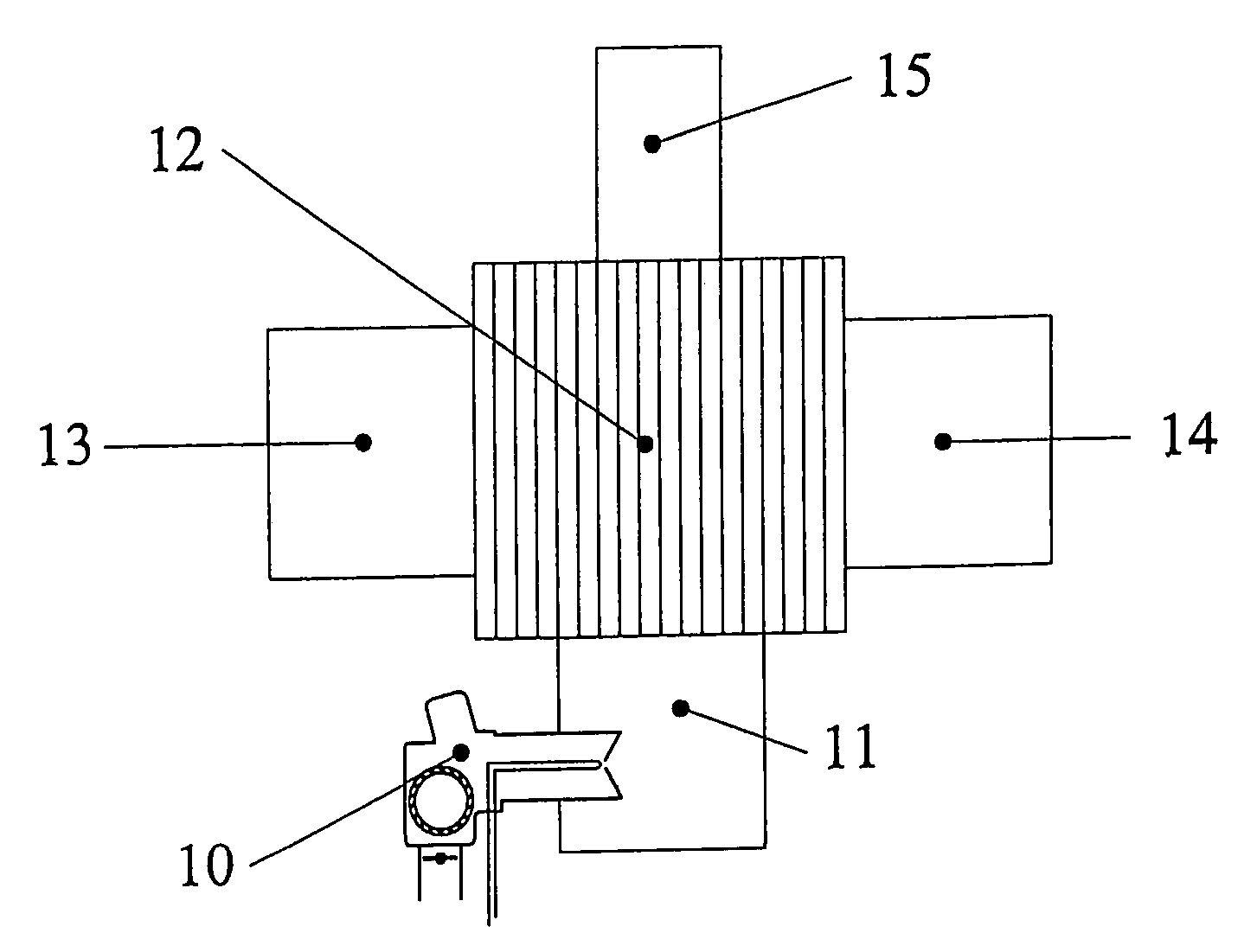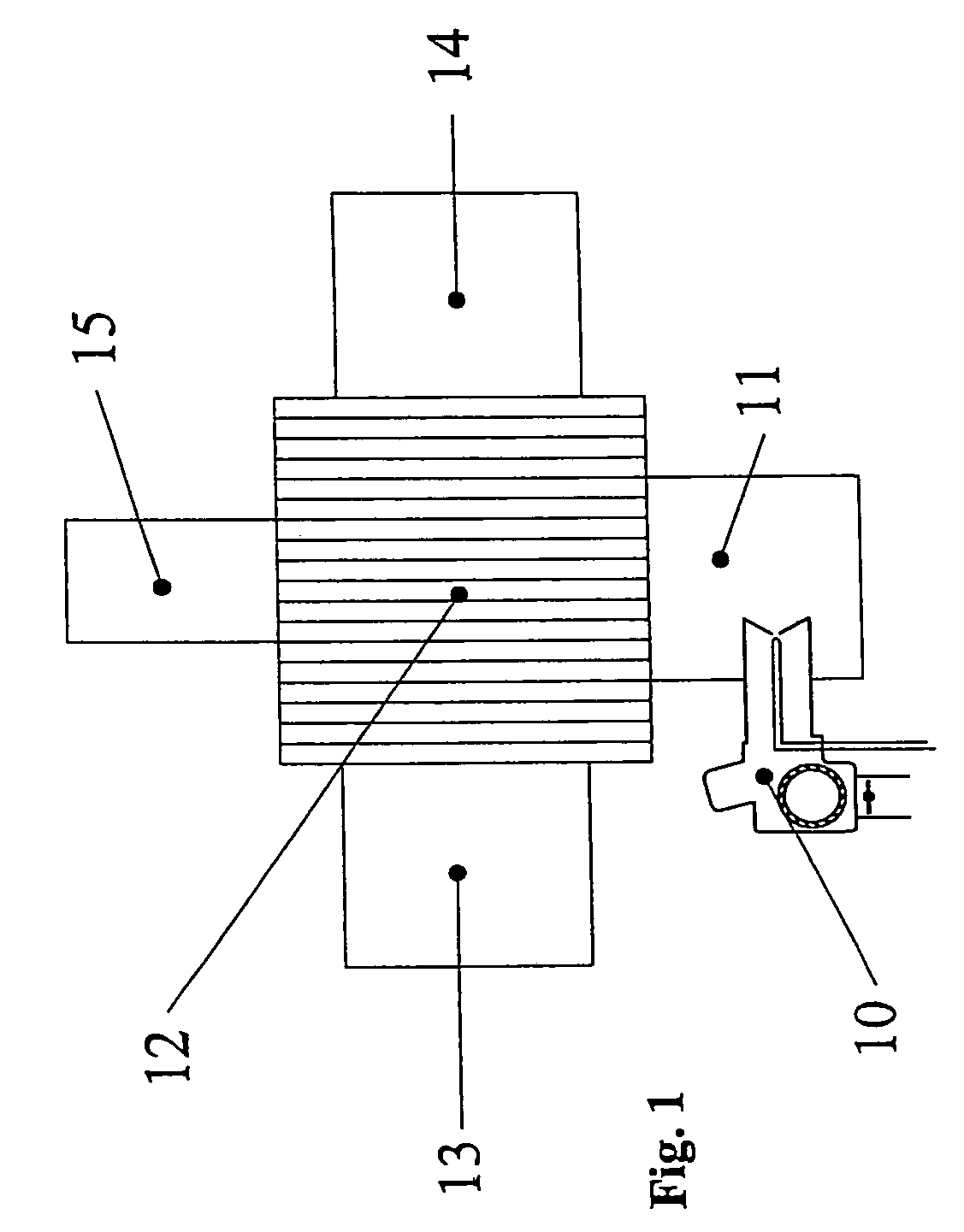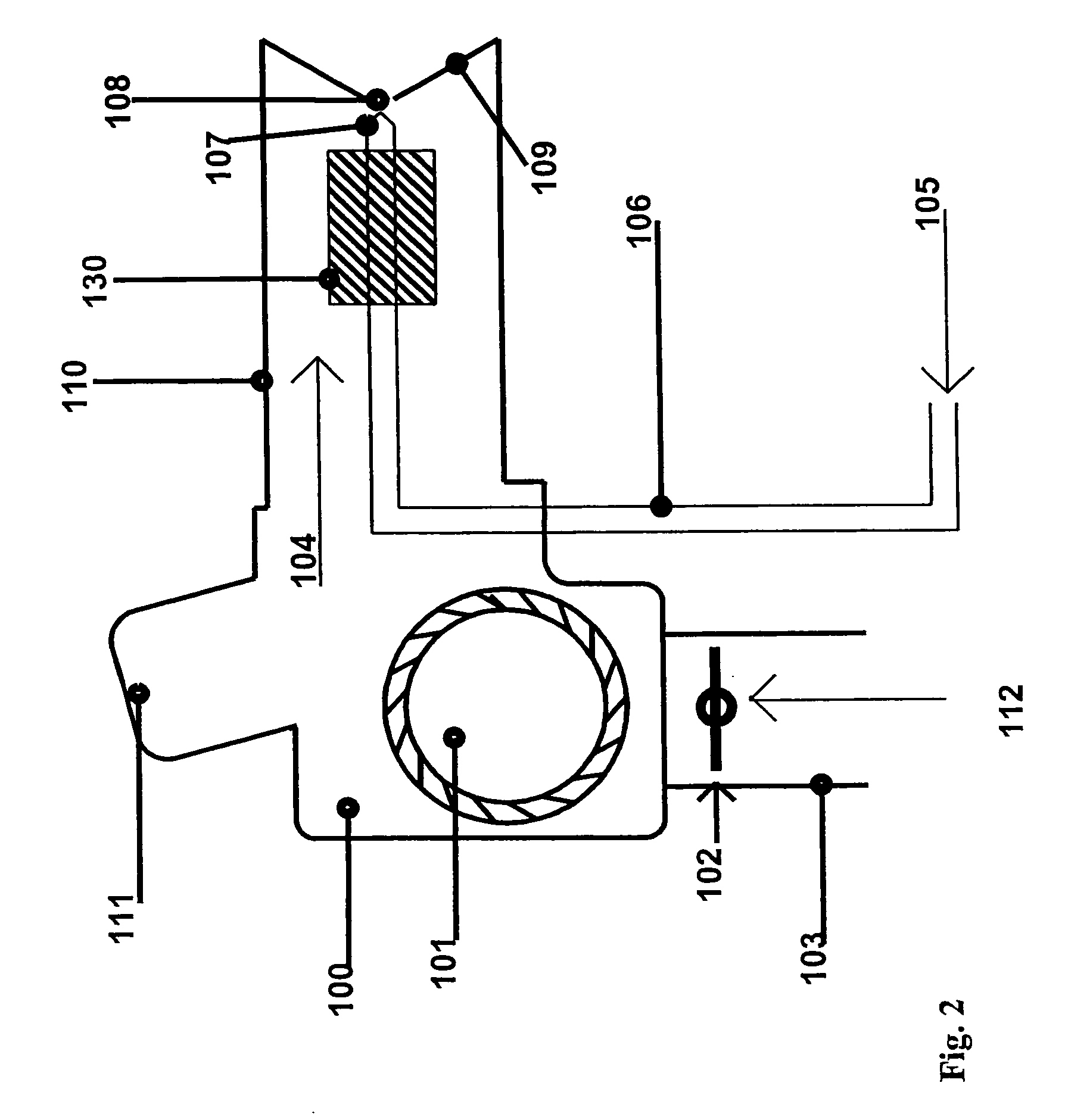Apparatus and method for fuel flow rate, fuel temperature, fuel droplet size, and burner firing rate modulation
a technology of fuel flow rate and burner firing rate, which is applied in the direction of lighting and heating apparatus, combustion types, instruments, etc., can solve the problem of fuel heat loss and other problems
- Summary
- Abstract
- Description
- Claims
- Application Information
AI Technical Summary
Benefits of technology
Problems solved by technology
Method used
Image
Examples
example 1
Gaseous Acetylene Fuel Flow Modulation Through Flash Heating
[0117]In this example the fuel combusted to cause a temperature increase in the air passing through the tube 305 described in FIG. 3 was acetylene. The non-heated fuel flow resulted in a large percentage of unburned fuel being exhausted. Incomplete combustion was indicated by heavy soot and black smoke coming out of the air out end 308 of the tube 305. When the “flash heating” fuel management techniques of this invention were used, however, combustion of the gaseous fuel was positively affected causing a more complete combustion.
[0118]This example differentiates the present invention from conventional devices that heat fuel to cause its vaporization because the fuel was in the gaseous state in both the complete and incomplete combustion situations. The underlying theory in the art regarding fuel vaporizing devices is that fuel in a vapor or gaseous state burns clean. Maximum combustion efficiency due to pre-heating the fuel...
example 2
Liquid Kerosene Fuel Flow Modulation by “Flash Heating”
[0120]In this example the fuel combusted to cause a temperature increase in the air passing through the tube 305 described in FIG. 3 was kerosene. FIG. 6 shows the relationship between the temperatures to which the fuel was “flash heated” and the resultant fuel flow rates at a constant fuel pressure of 100 psi. FIG. 2 depicts how the “flash heating” modulation method was adapted to a conventional burner. FIG. 7 shows the relationship between the desired temperature rise of the fuel and the energy required to cause the fuel temperature and flow modulation. The electrical requirements can be used in algorithms used for remote monitoring where temperature rise of the fuel and electrical requirements to achieve the temperature rise are used to calculate fuel flow.
example 3
Liquid Kerosene Fuel Flow Modulation Through “Flash Heating”
[0121]This test simulated an operation regime in which the initial fuel flow is high and subsequently, after thermal stabilization, the fuel flow rate is modulated to a lower flow rate. FIG. 8 is a graphical representation of the data collected for fuel flow in gallons of fuel flowed per hour versus time during the test. FIG. 9 is a graphical representation of the temperature to which the fuel was modulated versus time elapsed. The fuel flow rate is shown to modulate when the fuel temperature is modulated. Time 14:30:00 to 14:48:00 in FIG. 9 indicates that the modulated flow rate is very stable.
PUM
 Login to View More
Login to View More Abstract
Description
Claims
Application Information
 Login to View More
Login to View More - R&D
- Intellectual Property
- Life Sciences
- Materials
- Tech Scout
- Unparalleled Data Quality
- Higher Quality Content
- 60% Fewer Hallucinations
Browse by: Latest US Patents, China's latest patents, Technical Efficacy Thesaurus, Application Domain, Technology Topic, Popular Technical Reports.
© 2025 PatSnap. All rights reserved.Legal|Privacy policy|Modern Slavery Act Transparency Statement|Sitemap|About US| Contact US: help@patsnap.com



